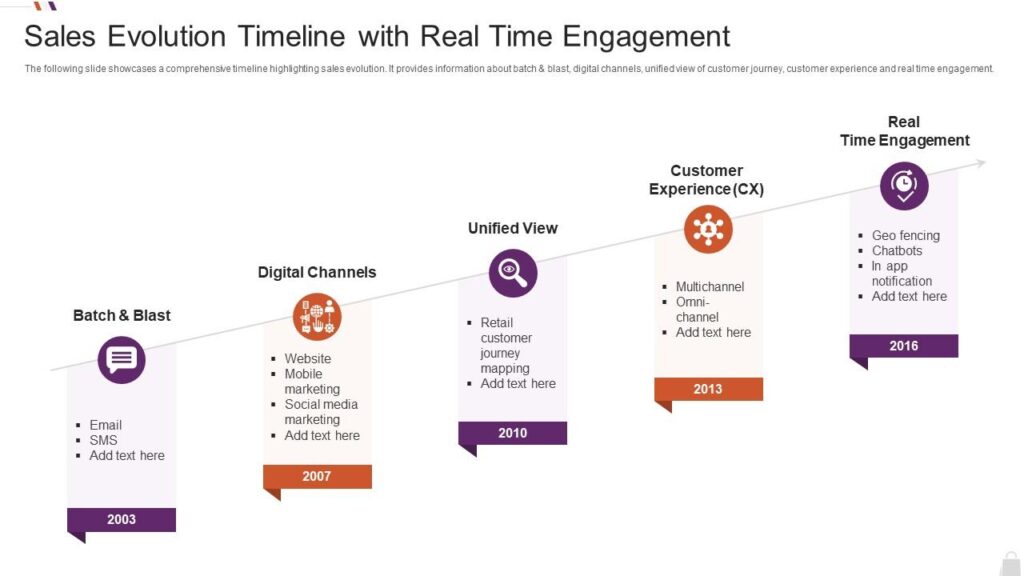In the bustling world of commerce, sales stand as the pulsating heart that determines a business's success. Sales have never been static; they are as dynamic as their markets. According to a Salesforce report, 57% of sales professionals missed their quotas in 2019. This statistic underscores the ever-changing challenges faced by sales teams and the need for businesses to be agile and responsive.
For businesses, the path to success is not just about making sales; it's about understanding them. Every transaction and every interaction holds a story – a piece of the puzzle that can reveal how to make the next sale even better. That's where continuous analysis comes into play. It’s the magnifying glass that brings the intricacies of sales into focus. By diving deep into sales data, businesses can unearth insights that lead to more strategic decisions. Furthermore, the optimization of the sales process, based on these insights, is paramount. In a world where the average buyer is more informed and has a plethora of options to choose from, businesses that don’t adapt and optimize stand to fall behind.
So, let's embark on a journey to understand how businesses can harness the power of analysis and optimization, ensuring they don't just survive but thrive in the dynamic world of sales.
Understanding the Sales Landscape
The sales realm has undergone significant transformations over the past few decades. From the traditional door-to-door salesmanship to the era of telemarketing and now, the age of digital sales—each phase has brought its own set of tools, techniques, and challenges. Today, the rise of e-commerce, big data, and AI is molding the sales process in ways that were once the stuff of science fiction.

The modern sales environment is characterized by its immediacy. Potential buyers can access vast information at their fingertips, empowering them to make more informed decisions. According to Google's Consumer Insights, 63% of shopping occasions begin online. This digital-centric approach requires sales strategies to be more dynamic, data-driven, and customer-centric than ever before.

However, with these advancements come new challenges. The sales landscape is increasingly competitive, with businesses vying for the attention of discerning consumers with a world of options. There's also the challenge of managing and interpreting the vast amount of data generated by online interactions. It's not just about having data; it's about deriving actionable insights from it.
Understanding the sales landscape is about recognizing the balance of opportunity and challenge in this digital age. It's about leveraging the tools and technologies available while navigating the obstacles that they sometimes present. This understanding will be our guiding light as we delve deeper into the intricacies of sales performance analysis and optimization.

Key Metrics in Sales Analysis
When diving into the intricacies of sales performance, it's paramount to understand which metrics matter most. These key indicators provide invaluable insights into your sales strategy's health, efficiency, and potential areas for improvement. Let's explore some of the most significant metrics in sales analysis:
Sales Volume and Revenue
The most straightforward metric, sales volume, indicates the number of units sold over a specific period, while revenue represents the total income from these sales. It's the starting point in any sales analysis, offering a clear picture of overall performance and growth trends.
Conversion Rates
This metric shows the percentage of leads that convert into actual sales. High conversion rates often indicate effective sales tactics and a compelling product offering. WordStream says the average landing page conversion rate across industries hovers around 2.35%, but the top 25% are converting at 5.31% or higher.
Customer Acquisition Cost (CAC)
CAC measures the average expense of acquiring a new customer. It encompasses marketing, research, and any other costs related to attracting new buyers. An optimal sales strategy seeks to reduce CAC while maximizing customer value.
Customer Lifetime Value (CLV)
CLV calculates the total worth of a customer throughout their entire relationship with a business. A high CLV suggests that customers are satisfied and loyal, leading to repeat purchases and referrals. It's a balance of quality product offerings and exceptional customer service.

Sales Cycle Length
This metric measures the average time it takes for a lead to travel through the sales funnel, from initial contact to final purchase. A shorter sales cycle can mean a streamlined and efficient process, but ensuring that quality isn't sacrificed for speed is essential.
In conclusion, understanding these metrics is more than just number-crunching; it's about extracting actionable insights. With these metrics in hand, businesses can make informed decisions, refine their strategies, and drive their sales performance to new heights.
Role of Technology in Sales Performance Analysis
In today's digital era, the sales landscape is undergoing a profound transformation, with technology playing an instrumental role. To compete effectively and stay ahead, businesses must leverage modern tools and platforms. Chief among these are CRM systems and advanced sales analytics tools, which serve as the backbone for a data-driven sales strategy.

Introduction to CRM Systems and Sales Analytics Tools
Customer Relationship Management (CRM) systems, like Salesforce and HubSpot, offer businesses an integrated platform to manage leads, track interactions, and nurture relationships. These systems centralize customer data, making it easier for sales teams to access and analyze information on the go.
Complementing CRM, sales analytics tools dive deeper into data, providing insights into sales trends, performance metrics, and areas of opportunity or concern. Tools like Tableau or PowerBI visualize complex data sets, allowing sales professionals to make more informed decisions.
Benefits of Integrating Technology into the Sales Process
1. Efficiency and Productivity: Automation features streamline tasks, reducing manual efforts and freeing up time for more strategic activities.
2. Improved Decision Making: Real-time data and insights ensure that decisions are backed by tangible evidence, minimizing guesswork.
3. Enhanced Customer Experience: With all customer interactions logged, sales teams can offer personalized solutions, increasing satisfaction and loyalty.

Technology isn't just a nice-to-have in the sales world; it's a necessity. With the right tools in place, businesses can understand their customers better, refine their strategies, and consistently drive growth.
Deep Dive: Qualitative vs Quantitative Analysis
In the world of sales analysis, data comes in various shapes and forms. While many might gravitate towards hard numbers and metrics, it's equally vital to understand the underlying emotions, perceptions, and feedback from customers. This is where the distinction between qualitative and quantitative analysis becomes crucial. Both types of data offer distinct insights, and when combined effectively, they provide a holistic view of sales performance.
Understanding Both Types of Data
Quantitative Data: This data type is all about numbers. It's objective, structured, and can be easily measured. Examples include sales figures, conversion rates, and customer demographics. This data helps businesses identify patterns, measure outcomes, and forecast future sales.
Qualitative Data: This is subjective data often derived from observations, interviews, or feedback. It provides insights into the ‘why' behind quantitative figures. Examples include customer testimonials, feedback forms, and open-ended survey responses. Qualitative data uncovers the motivations, preferences, and pain points of customers.
Using Qualitative Feedback and Quantitative Metrics in Tandem
1. Contextualizing Metrics: While quantitative data might show a drop in sales, qualitative feedback can reveal the reasons behind it. Maybe a product feature isn't resonating, or perhaps an external factor influences purchasing decisions.
2. Refining Strategies: Pairing a high customer acquisition cost (CAC) with feedback about ad irrelevance can guide more targeted marketing campaigns.
3. Enhancing Product Offerings: If conversion rates are low, but feedback indicates demand for a feature, businesses know where to focus their product development.

To truly excel in sales performance analysis, businesses must value both qualitative and quantitative data. Each type offers unique insights, and together they paint a complete picture that drives informed decisions and strategies.
Sales Funnel Analysis
The sales funnel is crucial in understanding a buyer's journey, from the first interaction with a brand to the final purchase. It's a visual representation of the stages a potential customer goes through, allowing businesses to pinpoint areas of success and detect phases where prospects might be slipping away. Companies can refine their marketing and sales strategies by analyzing the sales funnel to optimize conversions and boost revenue.

Overview of the Sales Funnel Stages
The sales funnel typically consists of several stages, each representing a phase in the buyer's journey:
- Awareness: Potential customers become aware of a product or service, often through marketing campaigns, social media, or word-of-mouth.
- Interest: They seek more information, perhaps signing up for a newsletter or following the brand on social media.
- Consideration: Prospects are considering making a purchase and might be comparing your product or service with competitors.
- Conversion: The decision-making phase where the prospect becomes a customer by finalizing the purchase.
- Retention: Post-purchase, where businesses aim to keep the customer engaged, encouraging repeat business and loyalty.
Identifying Bottlenecks and Drop-off Points
With the funnel laid out, the next step is analysis. By examining the number of prospects at each stage and the rate at which they progress to the next, businesses can identify where they're losing potential customers – the bottlenecks and drop-off points.
For example, if a significant number of visitors sign up for a newsletter (Interest stage) but few make a purchase (Conversion stage), there may be an issue with the marketing materials, product pricing, or the checkout process. Addressing these concerns can lead to increased conversion rates and overall sales.
Conclusively, analyzing the sales funnel offers actionable insights. It empowers businesses to make informed decisions, optimize their strategies, and ultimately drive more sales.
The Power of A/B Testing in Sales
Every business decision should ideally be data-driven, especially in a dynamic arena like sales. One of the most potent tools to drive this is A/B testing, also known as split testing. It's a method that allows businesses to compare two versions of a webpage, email, or other sales assets to determine which performs better in conversions.

What is A/B Testing?
A/B testing is a straightforward but powerful process. It involves creating two different versions of a sales asset: version ‘A' (the control) and version ‘B' (the variation). These versions are shown to different subsets of users. Sales teams can optimize their strategies by analyzing which version drives more conversions.
How It Can Pinpoint Effective Strategies
Instead of relying on intuition or unvalidated advice, A/B testing provides empirical evidence about what resonates with your audience. Whether it's the color of a call-to-action button, the wording of a sales email, or the layout of a landing page, split testing reveals what truly appeals to your target audience.
Real-World Examples of Successful A/B Tests in Sales
Countless companies have reaped significant benefits from A/B testing. For instance, ConversionXL reports a case where a simple change in the CTA text led to a 161% increase in click-through rate. Another instance from HubSpot revealed that removing a navigation bar increased conversions by 28%. These are just glimpses into the potential power of A/B testing in optimizing sales strategies.
In essence, A/B testing is an indispensable tool for any sales team aiming to refine its strategies and ensure they're harnessing the full potential of their sales assets.
Training and Development: A Continuous Necessity
In today's fast-paced business world, resting on laurels is not an option, especially in sales. As product features evolve, competitors emerge, and customer preferences change, the ability of a sales team to adapt becomes paramount. That's where the magic of continuous training comes in.
The Significance of Continuous Training for a Sales Team
Constant training ensures that sales professionals remain at the top of their game. It equips them with updated product knowledge, sharpens their sales techniques, and reinvigorates their motivation. More than just skill acquisition, ongoing training fosters a culture of growth, setting the stage for long-term success.

Methods and Tools for Sales Training
Several approaches can be adopted for sales training. Traditional classroom sessions, role-playing exercises, and workshops still hold value. However, with the rise of digital platforms, e-learning modules, webinars, and VR-based simulations have gained prominence. Tools like Salesforce's Trailhead or HubSpot Academy offer a plethora of courses tailored for sales excellence.
Evaluating the ROI of Training Programs
While the benefits of training are evident, it's crucial to measure its effectiveness. Metrics such as sales performance pre and post-training, employee retention rates, and customer feedback can offer insights. Using tools like Learning Management Systems (LMS) can also provide analytics on course completion rates, quiz scores, and areas of improvement.
In conclusion, as the adage goes, “The only constant is change.” Sales teams that recognize this and invest in continuous training position themselves miles ahead in the competitive race.
Conclusion: The Never-Ending Journey of Sales Optimization
With its dynamic nature and ever-evolving challenges, the world of sales emphasizes the sheer importance of continuous analysis and optimization. As we've navigated through the complexities of sales performance, one reality becomes crystal clear: the journey to sales excellence is perpetual.

According to a McKinsey report, companies that prioritize sales analytics and performance management witness a 15% increase in their revenue. Such statistics underscore the value of constant evaluation and the competitive edge it provides in today's cutthroat business environment.
But beyond numbers and techniques lies a deeper truth. Embracing a continuous learning and optimization culture is more than a business strategy; it's a mindset. This culture doesn't just foster growth in numbers but nurtures resilience, adaptability, and forward-thinking – traits indispensable for long-term success in the tumultuous world of sales.
In closing, while tools, strategies, and technologies may evolve, the foundational principle remains steadfast: The quest for sales optimization is unending. As businesses, we must don the mantle of relentless learners, always seeking and always improving. Because in the world of sales, standing still is not an option.










